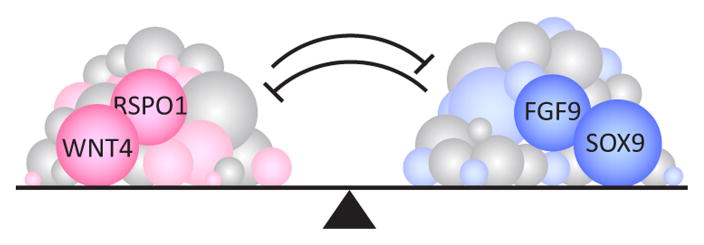Figure 1.
Many genes may be involved in establishing a bipotential state in the early gonad. Balanced antagonistic signaling pathways, including FGF9 and WNT4, hold somatic precursor cells in an undifferentiated state. The transcriptome is highly active and complex during this window, which suggests that many more genes and pathways are involved in conferring this plasticity.

